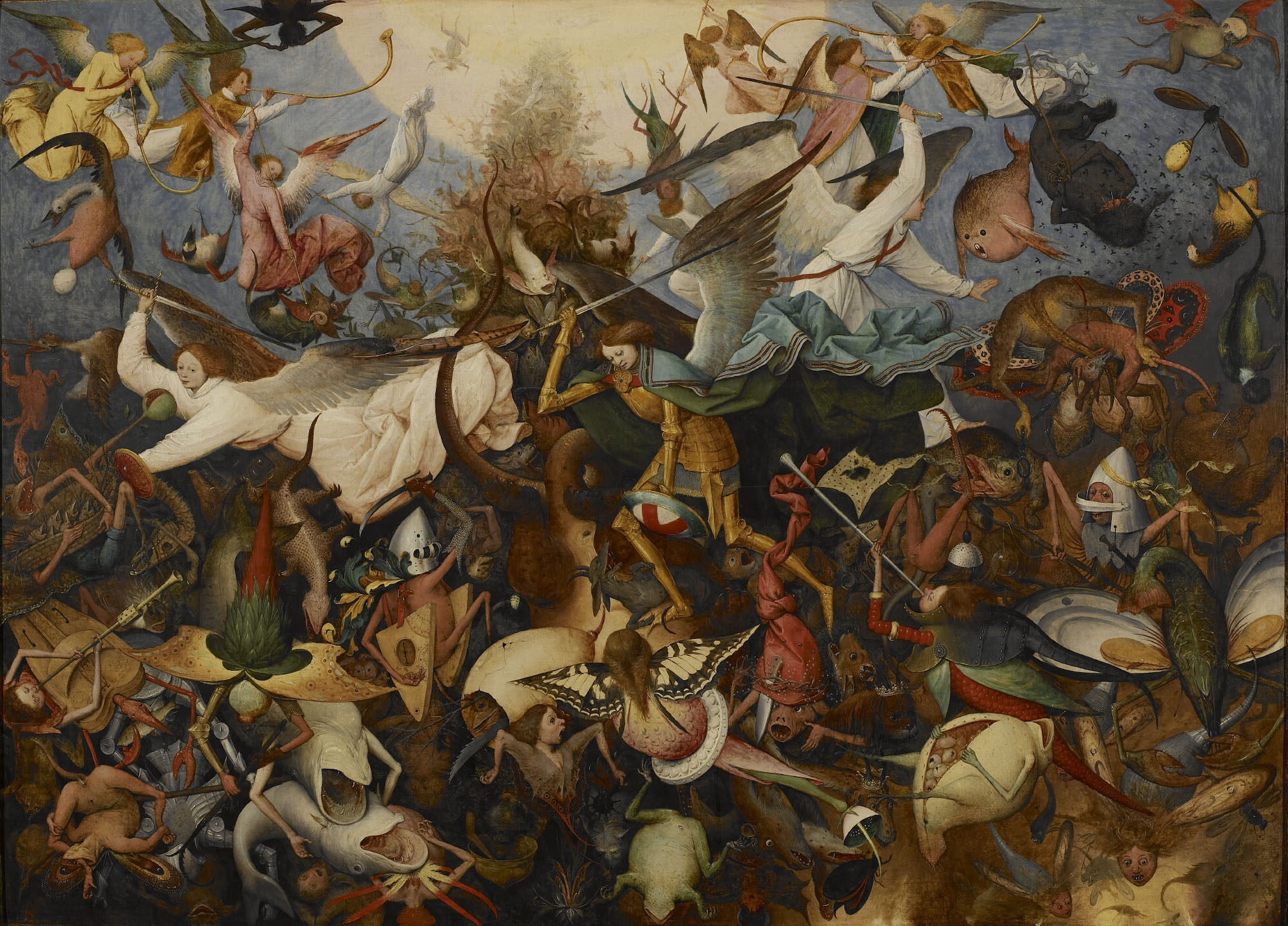We continue our amazing partnership with the Royal Museums of Fine Arts of Belgium in Brussels with this amazing, Bosch-like Bruegel. Enjoy!
Bruegel painted this picture when he was still living in Antwerp and supplying drawings to the engraver Hieronymus Cock. Turning his back on the then-dominant Italian models, he plunges into the then old-fashioned tradition of Hieronymus Bosch’s world. An apparently inextricable mixture of persons and shapes offers itself to our bewildered gaze. Emerging from distant depths in a halo of light, monsters are thrown to earth as from a breaking wave. Angels combat them, led by St Michael, thin as a rake in his golden armour, striking with his sword at the dragon with the seven crowned heads on which he has his foothold. The combat of the archangel with the fallen angels is described in the Book of Revelation (12, 3-9) and was frequently illustrated from the Middle Ages onwards. In Bruegel’s rendering, the violence is expressed not in the bitter nature of the battle – indeed St Michael and his sparse troops do not appear particularly threatened by the demons – but by the intensity of the fall – infernal and endless – of this crawling, hideous multitude that invades the entire surface of the picture, in a remarkable unity of action which increases its impact. By borrowing minutiously observed elements from the plant, animal, mineral and human worlds and combining them to form hybrid, deformed beings, Bruegel invents creatures that are the most repulsive, but also the most curious and fantastic imaginable. Mussel shells grafted onto a gigantic shrimp, a human head with butterfly wings attached to a shapeless, bloated body, a puffy gnome carrying a sundial and with a plumed helmet on his head, viscous fish with arms, lizard scales, crustacean paws… a seemingly endless list. Within the mêlée, every element is differentiated by the scrupulous rendering of the textures. With their long, refined silhouettes, St Michael’s allies, elegantly garbed in delicate, luminously coloured albs, are automatically on the side of the Good, in a state of grace that enables them to dominate effortlessly the monstrous hordes, moving around in a clear and azure sky which is in profound contrast with the darkness reserved for the rebels. Bruegel reveals himself here to be a marvelous colourist, dexterously distributing accents of red, green, blue and white and alternating the dark browns and lighter beige ochres with brio.
Text: Véronique Bücken, Museum of Ancient Art. A Selection of Works, Brussels, 2001, p. 88 © Royal Museums of Fine Arts of Belgium, Brussels
P.S. The theme of the Fall of Rebel Angels was featured as an artwork in the famous Netflix TV series, Dark. Did you see it? Click here to discover Art in Dark.
P.P.S. If you're looking for something amazing to hang on your wall - check out our DailyArt Prints here :)


 Pieter Bruegel the Elder
Pieter Bruegel the Elder